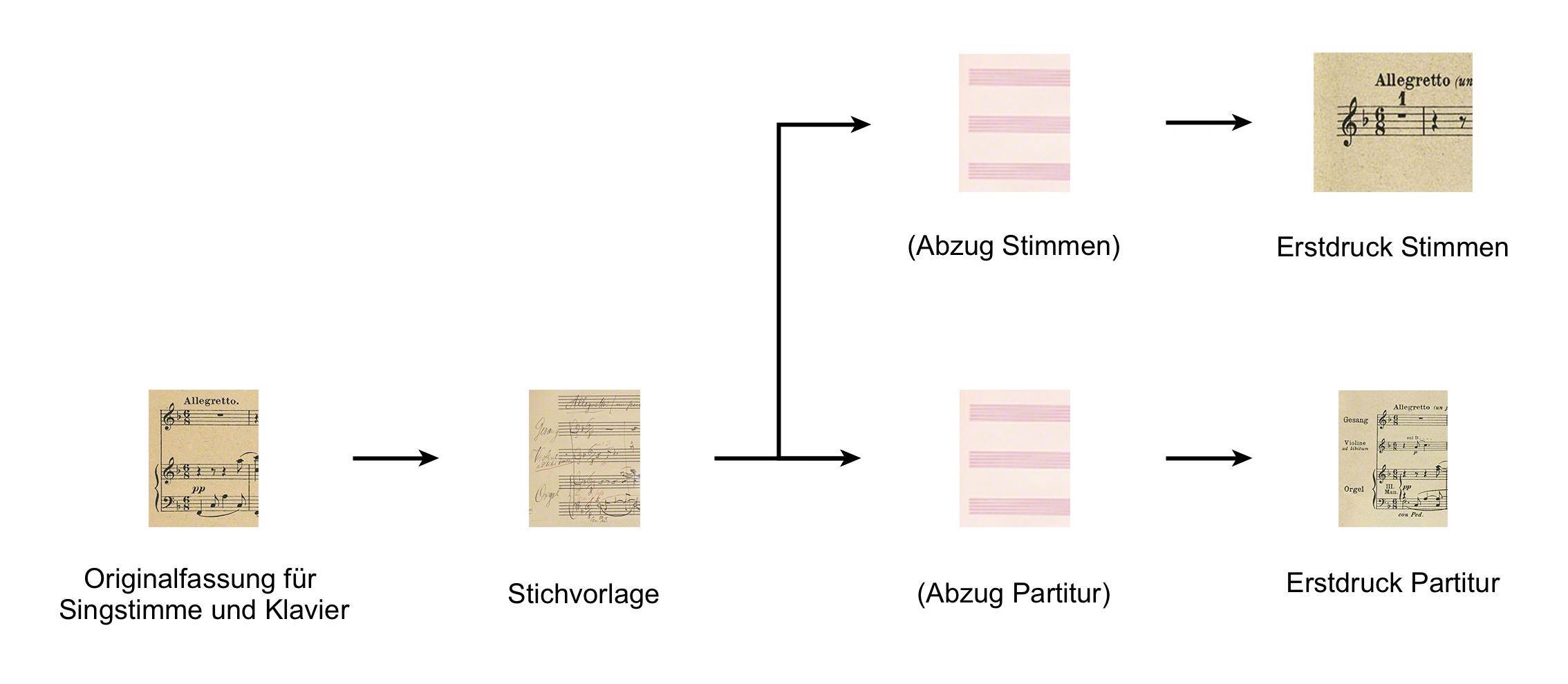Mariä Wiegenlied op. 76 No. 52
Version for medium voice, organ and violin ad lib.
-
Mariä Wiegenlied
Text: Martin Boelitz
- -
- Schlichte Weisen op. 76 Bd. VI for medium voice and piano
Other versions:
- -
1.
| Reger-Werkausgabe | Bd. II/7: Vokalwerke mit Orgelbegleitung und weiteren Instrumenten, S. 80–82. |
| Herausgeber | Alexander Becker, Christopher Grafschmidt, Stefan König. Unter Mitarbeit von Dennis Ried und Stefanie Steiner-Grage. |
| Verlag | Carus-Verlag, Stuttgart; Verlagsnummer: CV 52.814. |
| Erscheinungsdatum | Juni 2019. |
| Notensatz | Carus-Verlag, Stuttgart. |
| Copyright | 2019 by Carus-Verlag, Stuttgart and Max-Reger-Institut, Karlsruhe – CV 52.814. Vervielfältigungen jeglicher Art sind gesetzlich verboten. / Any unauthorized reproduction is prohibited by law. Alle Rechte vorbehalten. / All rights reserved. |
| ISMN | M-007-18850-4. |
| ISBN | 978-3-89948-318-5. |
Mariä Wiegenlied
Martin Boelitz: Vor einem alten Bilde, in: Westermanns Monatshefte. Illustrierte Deutsche Zeitschrift für das geistige Leben der Gegenwart, 52. Jg. (1908), vol. 104.2, issue 622 (July 1908 [day unknown]), George Westermann, Braunschweig, p. [580].
Martin Boelitz: Vor einem alten Bild(e), in:
id.: Ausgewählte Gedichte, Fritz Eckardt, Leipzig
unknown
Used for comparison purposes in RWA: First edition
Copy shown in RWA: DE, Karlsruhe, Max-Reger-Institut/Elsa-Reger-Stiftung.
Note: Textvorlage: Reger besaß eine Mappe mit vierzehn handschriftlichen Texten des Dichters (lose Blätter), wohl in Abschrift (heute in den Meininger Museen/Max-Reger-Archiv). Reger kreuzte sich das Gedicht (dort ohne Titel) an.
Note: Erste Textzeile: Vorlage und Erstausgabe “im” statt (wie bei Reger) “am” Rosenhag.
Note: In den Bänden, welche die Vorlage für die Ausgewählten Gedichte gebildet haben sollen, ist das Wiegenlied (neben einigen weiteren Gedichten) nicht enthalten.
1. Composition and Publication
Mariä Wiegenlied from the sixth volume of Schlichte Weisen op. 76 (no. 52), published in October 1912, has remained Reger’s most popular vocal composition to this day.1 The setting of the text by Martin Boelitz for voice and piano, which was soon available to purchase in several separate transposed editions, established itself as a popular encore piece even in the repertoire of singers who were otherwise unfamiliar with Reger’s output.
In April/May 1915 Reger responded for the first time to its continuing success with the public and suggested a version for voice and orchestra to the publisher Bote & Bock as an addition to his song orchestrations from op. 762; this was published in the summer. In December the publisher then first approached Reger with the request for a solo piano version of the song. Reger delivered this version – with the song text underlaid beneath the piano part – on the 13th of the month (see postcard). Two days later, in a letter of thanks for the receipt of the royalty, he also spoke of an “organ arrangement” for which, corresponding with the publisher’s wish, he wanted to “use the violin ad. lib.” as an additional part (letter dated 15 December 1915). Reger sent the engraver’s copy of the organ (violin) arrangement, kept in the original key of F major like the piano solo arrangement, on 18 December. He noted: “The vocal part is naturally retained! […] I have pleasure in presenting you with the manuscript of the enclosed arrangement for your Archive.” (Letter) On 22 December he received his royalty and returned the signed copyright agreement (letter). Whereas the first printed edition of the piano version was probably supplied during the Christmas holidays, the version for voice, organ and violin ad libitum only seems to have been published at the beginning of 1916;3 print runs from 1917 onwards were alternatively also supplied “with words for church use” 4 (“Schlaf wohl, du Himmelsknabe”). Whilst composing the Twelve Little Pieces on Original Songs op. 103c for violin and piano in February 1916, Reger arranged Mariä Wiegenlied one further time.
2.
Translation by Elizabeth Robinson.
1. Reception
At present, there are no records of performances in Reger's time.
1. Stemma

2. Quellenbewertung
Der Edition liegt als Leitquelle der Erstdruck der Partitur zugrunde. Als zusätzliche Quellen wurden die Stichvorlage sowie die Erstdruck-Stimmen herangezogen. Die Quellen der Originalfassung für Gesang und Klavier sowie der Fassungen für Singstimme und Orchester bzw. für Klavier (mit unterlegtem Text) spielten aufgrund der unterschiedlichen satztechnischen Faktur für editorische Entscheidungen keine Rolle.
3. Sources
- Stichvorlage
- Erstdruck
Object reference
Max Reger: Mariä Wiegenlied op. 76 No. 52, in: Reger-Werkausgabe, www.reger-werkausgabe.de/mri_work_01128.html, version 3.1.5, 28th November 2025.
Information
This is an object entry from the RWA encyclopaedia. Links and references to other objects within the encyclopaedia are currently not all active. These will be successively activated.